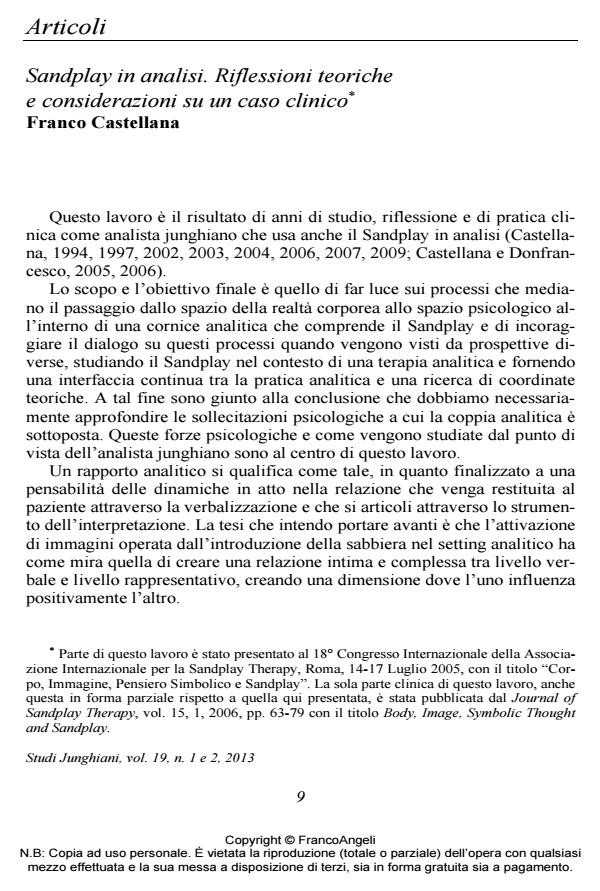Sandplay in Analysis. Theoric Considerations about a Clinical case
Journal title STUDI JUNGHIANI
Author/s Franco Castellana
Publishing Year 2014 Issue 2013/37-38
Language Italian Pages 20 P. 9-28 File size 821 KB
DOI 10.3280/JUN2013-037002
DOI is like a bar code for intellectual property: to have more infomation
click here
Below, you can see the article first page
If you want to buy this article in PDF format, you can do it, following the instructions to buy download credits

FrancoAngeli is member of Publishers International Linking Association, Inc (PILA), a not-for-profit association which run the CrossRef service enabling links to and from online scholarly content.
This paper examines the analytic setting that includes Sandplay and the processes which facilitate the movement of experience that has been encapsulated in the body (which has the potential to become psychological, but is not yet capable of symbolization) into psychological space. As Jungian analyst The Author offers is experiences to encourage a dialogue about the phenomena that are observed in Sandplay. Theoretical grounding for Sandplay is found in Jungian and psychoanalytic theory. The focus of the author is upon the psychological forces, to which the analytical pair is subjected, when intense affects generated by the Sandplay process are manifested in the transference e countertransference.
Keywords: Analysis, body encapsulation, affect transformation, symbolization, Sandplay, Kalsched
Franco Castellana, Sandplay in analisi. Riflessioni teoriche e considerazioni su un caso clinico in "STUDI JUNGHIANI" 37-38/2013, pp 9-28, DOI: 10.3280/JUN2013-037002